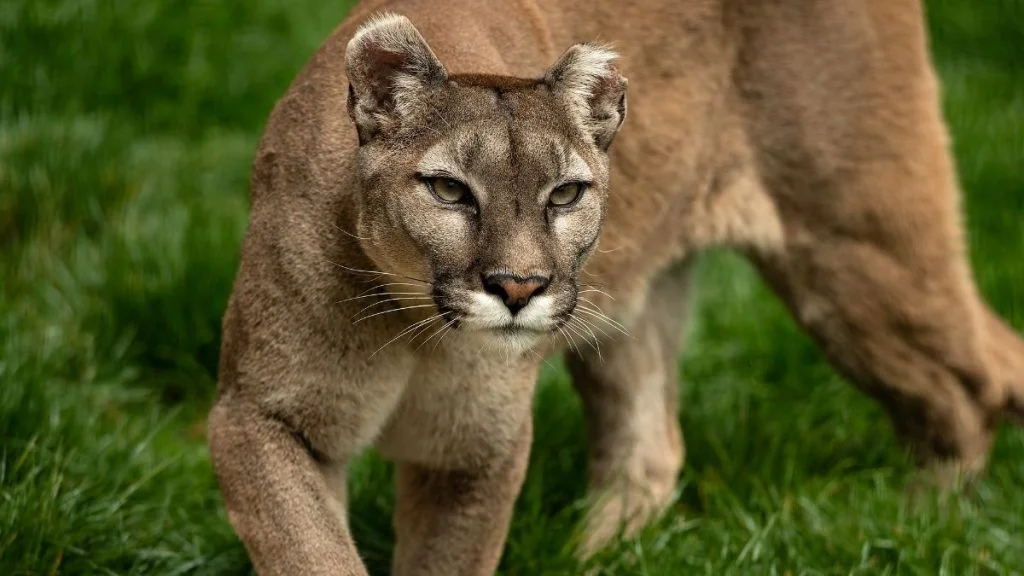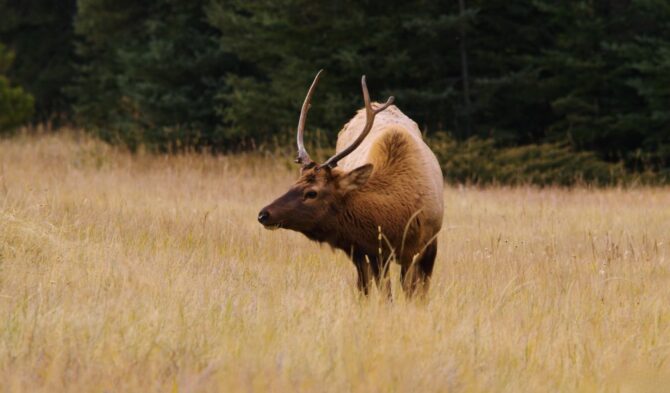Colorado’s stunning landscapes and diverse flora and fauna make it a popular destination for outdoor enthusiasts and tourists alike.
However, there are several creatures in the area that pose a potential danger to humans and should be avoided.
Among the most dangerous animals in Colorado are elk, moose, coyotes, and mountain lions, all of which can become aggressive if they feel threatened.
While attacks are rare, it’s important to understand the risks and take precautions to ensure your safety while enjoying Colorado’s great outdoors.
In this article, we’ll take a closer look at these deadly animals and offer some essential wildlife safety tips for hikers and nature lovers.
The Most Dangerous Animals in Colorado
1. Mountain Lion
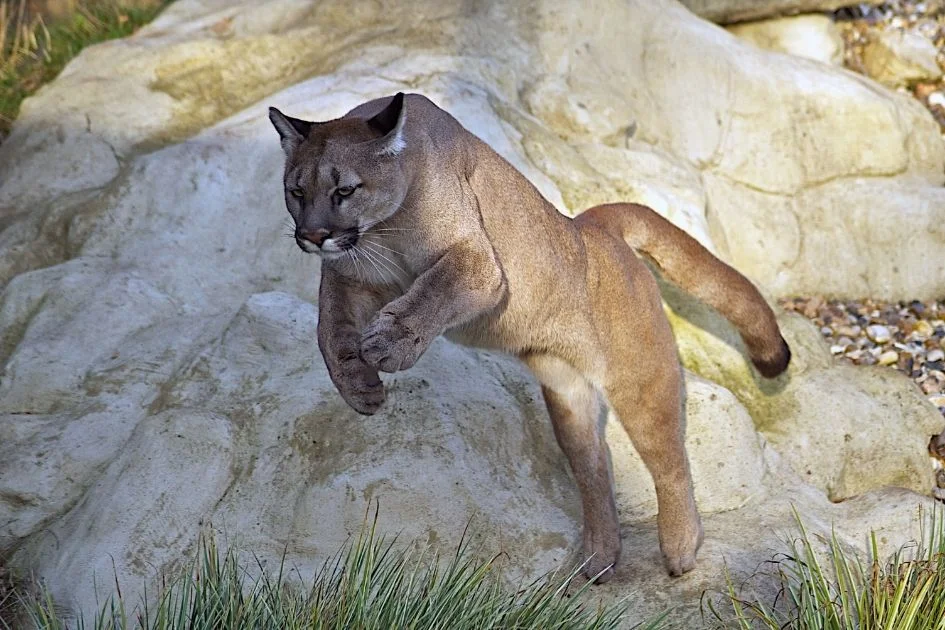
- Scientific name: Puma concolor
- Habitat: Foothills, canyons
- Threats: Stealthy predators with powerful paws and jaws, can attack humans when threatened or in search of food
The first dangerous animal on our list is the infamous mountain lion. It is also known as the cougar, the panther, and the puma.
With up to 7,000 mountain lions in Colorado, the probability of you encountering one is higher than you think. This is especially true if you decide to explore a canyon or foothill.
One thing is for sure; you do not want to mess up with the mountain lion. Its jaw is extremely strong, and just one bite can prove fatal.
Panicking can seem like a threat to any animal, so you must remain calm if you come across a mountain lion. Slowly move backward while speaking firmly to it.
2. Coyote
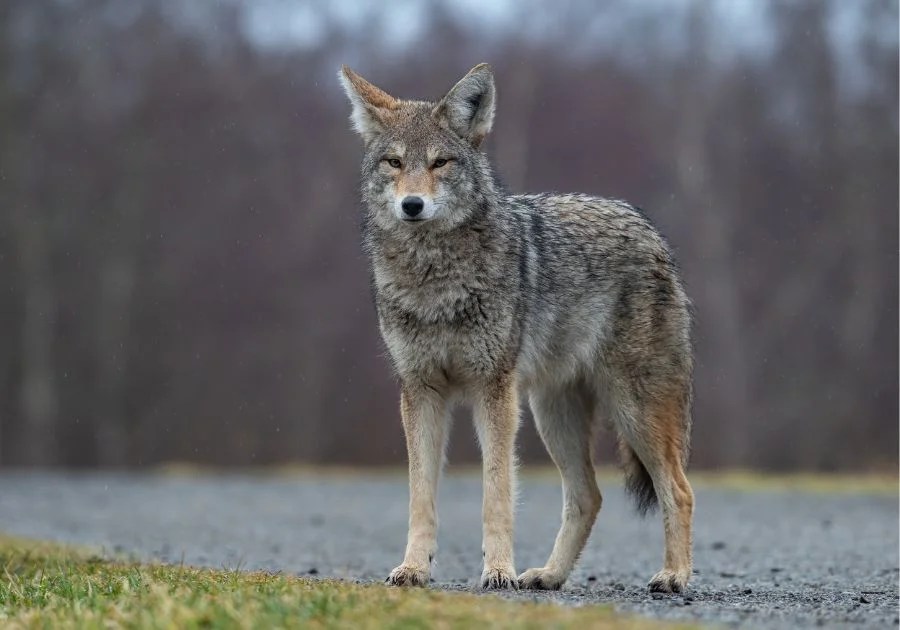
- Scientific name: Canis latrans
- Habitat: Prairies, urban areas
- Threats: Aggressive pack hunters, potential disease carriers
The coyote is one of the most popular wild dog species. It is also small and doesn’t seem like a threat compared to the mountain lion.
However, looks can be deceiving, especially with the coyote. They can pose a threat to children, pets, and even adults because they hunt in packs.
Similar to the mountain lion, panicking won’t be in your favor. Coyotes are generally wary of humans and can back off if you’re firm with them.
Also, do not feed a coyote, and report to appropriate authorities if a lone coyote displays erratic behavior. It is often a symptom of rabies.
Related: How To Survive A Coyote Attack – 6 Important Safety Tips
3. Moose
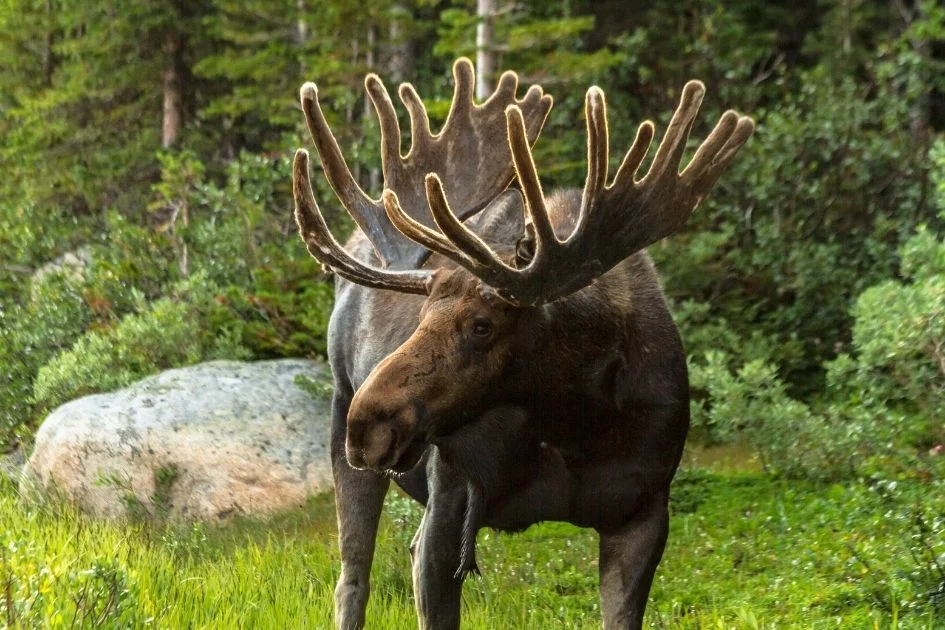
- Scientific name: Alces alces
- Habitat: State Forest State Park, higher elevation areas
- Threats: Large, aggressive, territorial
The moose is not a predator and isn’t likely to take you for food. It has few natural enemies as it only came into Colorado only 30 years ago—and its size might be a deterrent to other predators living in the state.
Its biggest enemy is humans, and that’s mainly because of its similarities with the elk. Though elks are smaller, they are hunted more.
Moose can only be dangerous when threatened, and the horns are strong weapons.
This happens even more when the moose is protecting its young or mating. Whatever you do, do not go too close to a mother moose.
4. Elk

- Scientific name: Cervus candensis
- Habitat: Lowlands of Routt National Forest
- Threats: Large, aggressive, territorial
The elk often attract hunters, and not in the elk’s best interest. Even at that, the elk population in Colorado is large, going over 280,000.
It is considered the largest population in the world and is the main point of attraction for tourists.
The attractiveness doesn’t make it less dangerous, though. Elks are unpredictable, especially during spring and fall.
Added to that are their weight and strength. Similar to other animals, do not approach the elk.
5. Black Bear
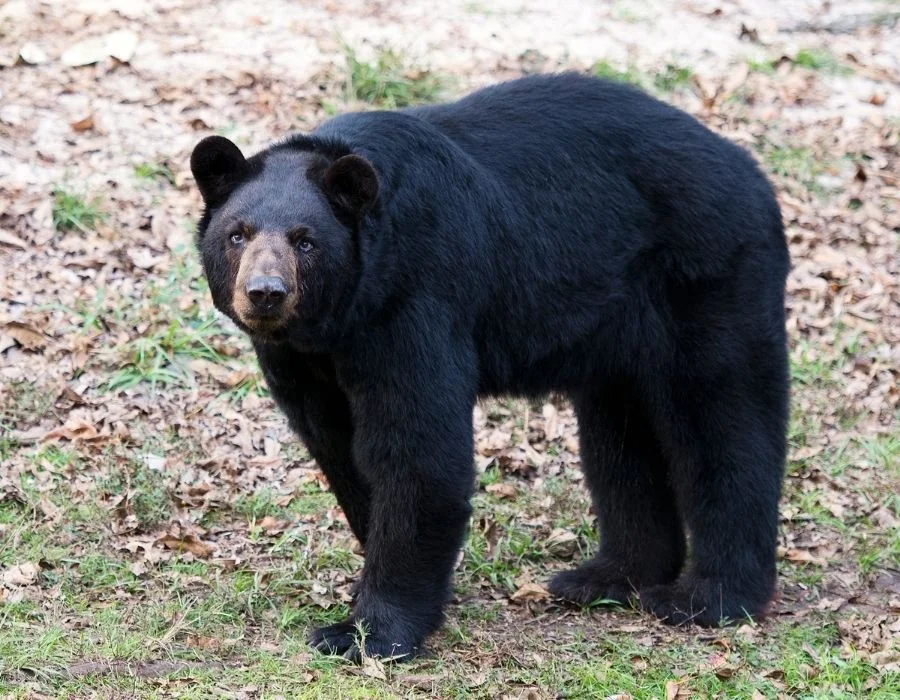
- Scientific name: Ursus Americanus
- Habitat: Open areas, natural fruit sources
- Threats: Strong, unpredictable, can attack when threatened
The black bear can be found in different parts of the United States, from Ohio to Colorado.
There are a lot of them in Gambel’s oak and aspen, often in open areas and places with lots of fruits.
The black bear is the only bear species in Colorado, and though it is called “black,” many are brown.
Contrary to popular belief, black bears tend to stay away from humans and do not attack unless provoked.
Seeing as they can be accidentally provoked, you should be careful around them. Don’t get too close, and make some noise to divert it if it approaches.
6. Colorado Bighorn Sheep
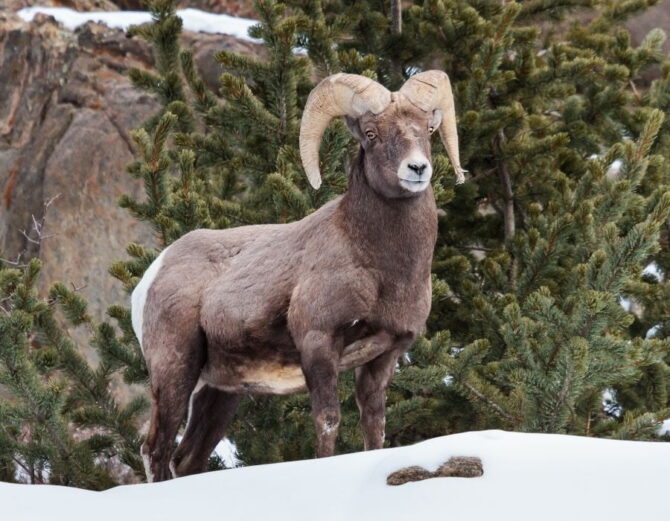
- Scientific name: Ovis canadensis
- Habitat: Steeps and mountains, the national park in Colorado
- Threats: Aggressive, may charge when they feel threatened or cornered
The Colorado bighorn sheep lives mainly in mountains, so if you’re a mountain hiker, you may see one. Its horns are both an aesthetic add-on and a tool for battle.
Males of herds often engage in battles, and the clashes of horns are a common sound in mountains.
As with other animals thus mentioned, give the Colorado bighorn sheep a lot of space. Any encounter with those horns won’t bode well for any human.
It also has a lot of speed, and you may not outrun it if it charges toward you.
Another animal similar to the bighorn sheep is the mountain goat, and while we didn’t add it to our list, the mountain goat behaves a lot like the bighorn sheep.
7. Tick

- Scientific name: Ixodida
- Habitat: Grassy areas and on the bodies of mammals
- Threats: Disease-carrying bloodsuckers that can transmit Lyme disease
The tick is the smallest animal on the list and doesn’t look dangerous, but in reality, it is placed at the top list of the most dangerous animals in Colorado and all over the world.
Its parasitic nature makes it a nuisance to any mammal it attaches to, and it is a carrier of bacteria and viruses.
The Colorado tick fever is what you risk contracting if you get bit by a tick.
The symptoms of this fever are unpleasant and can cut short the excitement of any trip. These symptoms include fever, chills, headache, and fatigue.
8. Rattlesnake
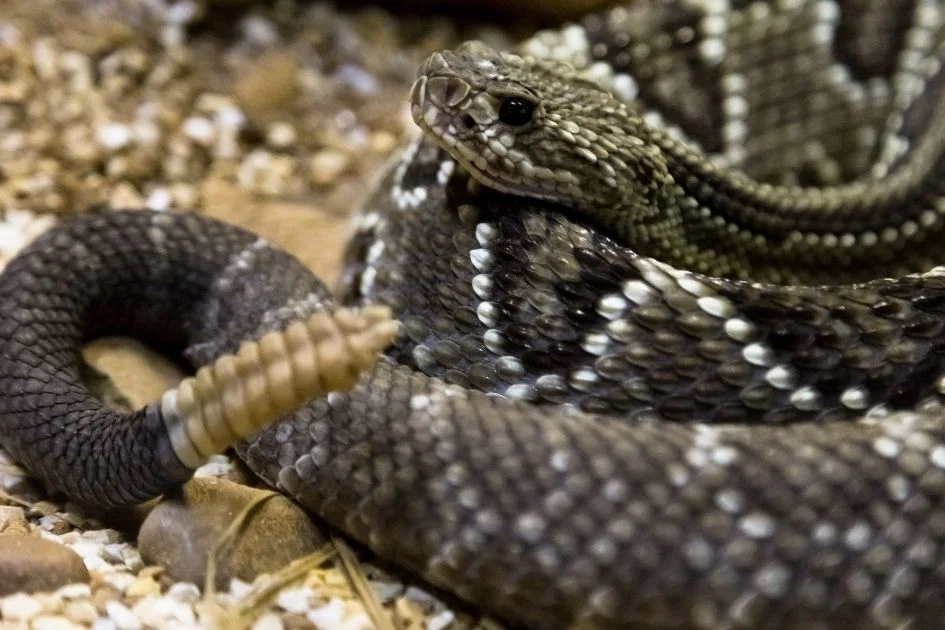
- Scientific name: Crotalinae
- Habitat: Foothills of mountains
- Threats: Venomous, can deliver a deadly bite
The rattlesnake is also known as the diamondback in Colorado. There are three main rattlesnake species to look out for in Colorado: the prairie, midget faded, and Massasauga rattlesnakes.
This snake is recognizable by its rattle end and can be found in different places in Colorado.
Rattlesnakes are highly venomous, so a bite from one can be life-threatening.
Fortunately, these snakes avoid people, and you may not see one throughout your stay. If you do encounter one, ensure you keep away from it.
9. Brown Recluse Spider
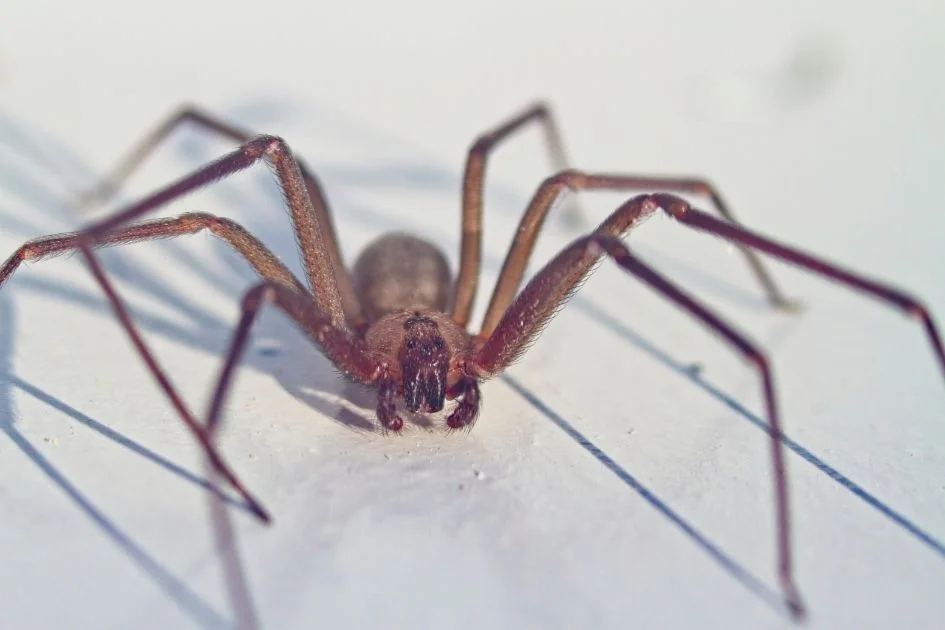
- Scientific name: Loxosceles reclusa
- Habitat: Dark and hidden spots
- Threats: Venomous bite can cause tissue damage and necrosis
The brown recluse spider is often found in the southern states of America, like Texas, California, Nevada, New Mexico, and Arizona.
They are not common in Colorado, but some were introduced into the state through the transport of goods.
The brown recluse spider doesn’t produce webs; it gets its prey by chasing and injecting venom.
The venom is also dangerous for humans, and even a prick can take months to heal.
10. Black Widow Spider

- Scientific name: Lactrodectus mactans
- Habitat: Dark, unperturbed areas
- Threats: Venomous bite can cause muscle pain, cramps, and spasms
There are more black widow spiders in Colorado than black recluse spiders, and they spin webs.
Though the last animal on our list, they are not the least dangerous. Its bite can make a healthy adult fall sick, showing symptoms like muscle pain, nausea, and breathing problems.
The black widow spider’s bite is not considered deadly for adults, but it can have a stronger effect on seniors and kids, requiring more medical attention.
Colorado Wildlife Safety Tips
If you’re lucky, you may never meet Colorado’s dangerous wildlife throughout your outdoor trips.
However, it’s best to stay safe than sorry. Here are some tips that could help you come back from hikes unharmed:
- If you encounter an elk, respect it, especially if it has a fawn. Mother elks are highly protective of their young ones, so it’s best not to approach the young.
- For mountain lions, coyotes, and bears, stand firm and make sounds to scare them away.
- For moose, it is best not to draw attention to yourself and create a distance.
- Do not turn your back on a wild animal.
- Don’t try to get too close to the animal. Maintain as much distance as possible.
FAQs
What is the most dangerous animal in Colorado?
The animal considered the most dangerous in Colorado is the mountain lion, also known as the panther. However, the records of actual attacks from the mountain lion are low, counting up to 22 attacks since 1990.
It does suggest that the fear of the mountain lion is what makes it seem more dangerous. If anything, animals like the rattlesnake and the elk are just as dangerous.
Are animal attacks on humans common in Colorado?
While you should take necessary precautions to protect yourself, animal attacks on humans are rare in Colorado. That doesn’t mean it is risk-free.
With so many animals out in the wild, Colorado has a certain level of danger. To stay safe, give wildlife their space.
Are there venomous snakes in Colorado?
The rattlesnake is found in many parts of Colorado, and there are four known species. All of them are venomous and should best be avoided.
Wrap Up
Safety and respect for nature are things to keep in mind while exploring and hiking in Colorado.
Enjoy the moment and make memories, but watch out for any signs of wildlife and maintain your distance.
Most of the animals considered dangerous are wary of humans and would mind their business unless provoked.
